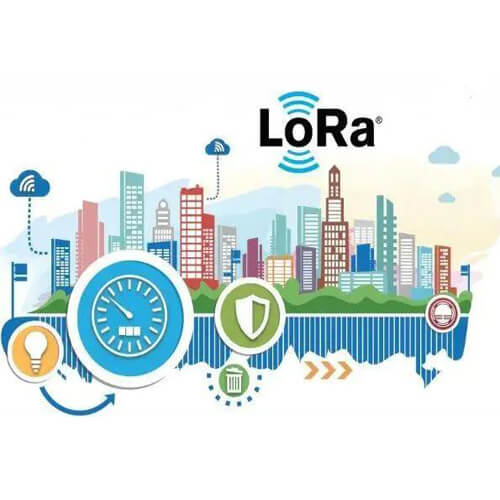With the development of technology, the Internet of Things (IoT) has become an indispensable part. It connects a variety of devices and sensors, enabling us to manage and control our environment more intelligently. As the number of sensors and connected devices increases, a stable, reliable, and long-lasting network is needed to enable communication. Long-Range, Low-Power Wireless Network (LPWAN) technology can meet this need. Among the many LPWAN technologies, LoRa technology is the most popular.
What is LoRa?
LoRa is a low-power wide-area network wireless standard developed by Semtech Corporation. The name “LoRa” stands for Long Range Radio, and its biggest feature is that it can transmit data over longer distances than other wireless methods under the same power consumption. It can even extend the range of traditional wireless radio frequency communication by 3-5 times under the same power consumption. LoRa technology is widely used in various long-range wireless communication fields of the Internet of Things, such as automatic smart farming, building automation equipment, wireless security systems, industrial monitoring and control, etc.
The purpose of developing LoRa technology is to solve the contradiction between power consumption and transmission coverage distance. Generally, low power consumption means a shorter transmission distance, while high power consumption means a longer transmission distance. So how does LoRa solve this contradiction? LoRa increases the sensitivity of the receiver, thus having a super strong budget, which does not require a very high transmission power. It enables the multi-point deployment of sensors and other LoRa IoT devices. In LoRa terminology, these deployed devices are called “nodes”.
Why choose LoRa technology?
LoRa technology works by transmitting data using chirp spread spectrum (CSS) modulation techniques. Compared with traditional narrowband modulation technology, this technology can achieve longer transmission distance and better anti-interference ability. In CSS, the transmitted signal is spread over a wide frequency range, making it less susceptible to noise and interference.
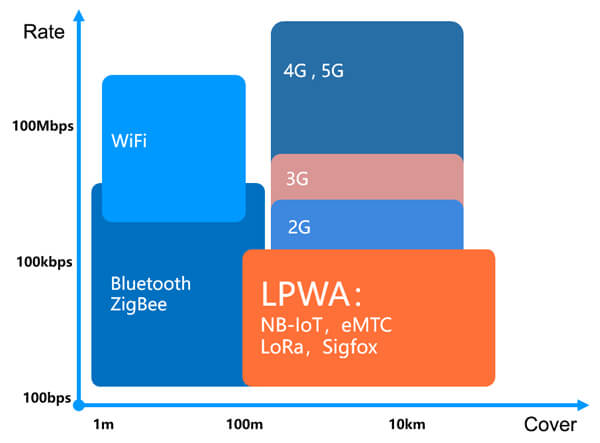
Therefore, the main advantages of Lora technology are low power consumption, long transmission distance, and strong anti-interference ability.
Why is LoRa low power consumption?
The reason why LoRa technology has lower power consumption is that it transmits data very rarely. It’s like two people standing 100 meters apart, you need to speak loudly to be heard by the other person. The receiving party only needs to listen quietly without making a response, thus saving power. Only the speaking party has high power consumption in this process. For example, the working current for LoRa transmission exceeds 100mA, while the working current for reception is only 10mA.
The transmission and reception mentioned here are not just for data uplink and downlink, but also include internal uplink and downlink. NB-IoT transmission is like a conversation between two people, where one person says “let me tell you something,” and the other person needs to respond with “OK, I heard you.” Both parties are speaking (transmitting data). In contrast, LoRa is like two people agreeing on a time to talk, where one person says “let me tell you something,” and the other person just needs to listen without responding.
NB-IoT, 2G, 4G, and other transmission methods require the device to actively request data from the base station, by asking “I am online, do you have any data to send to me?” This process itself consumes power. However, LoRa technology works differently. LoRa and the base station agree on a time, and when that time comes, the base station starts speaking, while the terminal listens quietly. This is the core reason for the low power consumption of LoRa.
Why does LoRa transmit farther?
LoRa achieves its long-range capabilities by using a spread-spectrum modulation technique called Chirp Spread Spectrum (CSS). Compared to other wireless technologies with similar power requirements, this technique allows LoRa to transmit data over longer distances.
CSS is a type of modulation that can spread a signal over a wider frequency range for a longer period of time and is less susceptible to interference and noise. This technology also allows for long-distance signal transmission without significant signal attenuation. In addition, LoRa devices can operate at lower power levels than other wireless technologies, reducing the energy required for long-distance data transmission.
LoRa operates in an unlicensed sub-gigahertz frequency band. Compared to Wi-Fi and the traditional 2.4 GHz frequency band, this frequency band is less crowded. This reduces the likelihood of interference, making it easier to transmit data over long distances without signal attenuation.
Why is LoRa strong in anti-interference ability?
LoRa uses spread spectrum modulation technology to spread the signal over a wide bandwidth, which helps the signal resist interference from other wireless signals. This means that even if multiple signals are operating in the same frequency range, LoRa can still receive its signal without being affected by other signals.
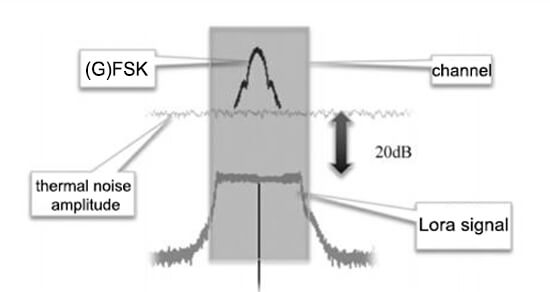
Compared to other wireless transmission methods such as Wi-Fi, Bluetooth, and cellular networks, LoRa devices not only operate at very low power levels but also transmit at very low data rates. This means that LoRa signals do not interfere with other wireless signals, nor are they affected by other wireless signals.
LoRa technology has an adaptive data rate function that can adjust the data rate based on the quality of the communication channel. This feature helps to ensure that LoRa devices always transmit data at the optimal data rate, which helps to improve the robustness of the communication channel and minimize interference. LoRa uses a robust FEC scheme that can accurately and reliably transmit data even in the presence of interference. The FEC scheme can detect and correct errors in the received data, which helps to improve the reliability of the communication channel and reduce the impact of interference.
What are the components of the LoRa network?
The LoRa network architecture is mainly composed of three parts:
LoRa nodes
LoRa nodes are small, low-power devices used to collect monitoring data. They are typically battery-powered and have a long lifespan. LoRa nodes can be sensors (such as soil sensors for agricultural irrigation or temperature sensors for environmental monitoring) or controllers or other devices that need to be used in conjunction with sensors (such as access control or valve controllers). Data is transmitted to the gateway via LoRa modulation.
LoRa gateway
The role of the gateway is to receive data from nodes and forward it to the server. LoRa gateways are usually connected to the Internet and can communicate with multiple nodes at the same time. The communication is bidirectional. The gateway can process the data received from the nodes and then forward it to the network server.
LoRa server
This is the core component of the LoRa network architecture. It receives data from gateways and forwards it to application servers. The LoRa network server also manages communication between gateways and nodes and provides security and identity authentication services.
LoRa working mode and application
The working mode of LoRa technology is similar to NB-IoT. LoRa Class-A is equivalent to NB-IoT PSM mode. IoT terminals need to actively send messages to the base station so that the base station can locate the terminal and send control commands.
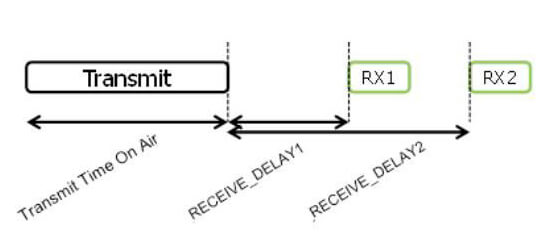
LoRa Class-B is equivalent to NB-IoT’s eDRX mode. IoT terminals contact the base station once every short period of time, and only then can the base station locate the terminal and issue control commands.
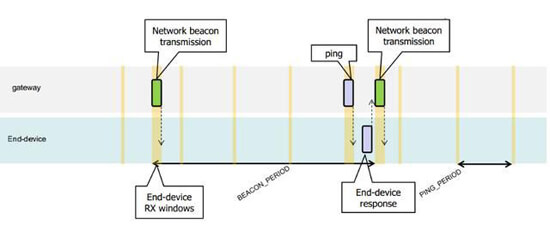
LoRa Class-C is equivalent to NB-IoT’s DRX mode or socket long connection. IoT terminals maintain close contact with the base station all the time, and the base station can issue control commands to the terminal at any time.
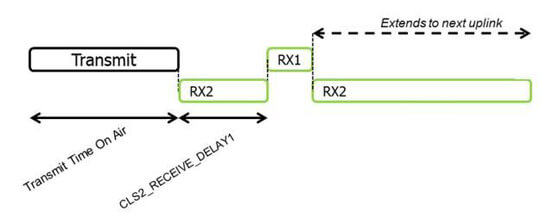
For places where real-time control of terminal equipment is not needed, Class-A is selected. This method is power-saving, and one battery can be used for several years. For example, smart water meters, gas meters, smart manhole covers, smart trash cans, etc.
For places where real-time control of terminal equipment is needed and data can be delayed for a few tens of seconds, Class-B is selected. For example, using the LoRa soil sensor to realize remote irrigation. Power-saving and control are balanced according to the demand. One battery can also be used for half a year. For example, street light control, cattle and sheep locators, agricultural and forestry greenhouse control, etc.
For places where real-time control of terminal equipment is needed and the delay requirement is relatively high, Class-C is selected, and it is directly connected to the power supply. For example, using the LoRa temperature and humidity sensor to monitor the greenhouse or machine room. In this case, Lora is not the best choice, and other wireless transmission methods can be selected.
What is LoRaWAN?
LoRaWAN stands for “Long Range Wide Area Network”. LoRaWAN is a communication protocol based on LoRa technology and is an abbreviation for LoRa Wide Area Network. The LoRaWAN network architecture is deployed in a star topology. Its main elements are battery-powered sensors (also known as “nodes”) that transmit data to one or more IP-connected LoRaWAN gateways, which forward the data to network servers, making the data available for running defined IoT applications.
LoRa and LoRaWAN
Video from Youtube @mobilefish
The relationship between LoRa and LoRaWAN
LoRa and LoRaWAN are two related technologies that are often used interchangeably, but they are actually different technologies that serve different purposes. LoRaWAN is a network protocol built on top of LoRa technology. LoRaWAN is designed for low-power, long-range communication between devices for IoT applications. LoRaWAN allows bi-directional communication between end devices and central network servers, enabling a wide range of IoT applications, such as smart cities, industrial automation, and agriculture.
LoRa and LoRaWAN are often used together in IoT applications. LoRa technology provides remote, low-power communication, while LoRaWAN provides network protocol and infrastructure to support IoT applications. However, it should be noted that LoRa and LoRaWAN are not the only options for remote, low-power communication in IoT applications. Other technologies such as Sigfox and NB-IoT may also be appropriate, depending on the specific requirements of the IoT application.
The difference between LoRa and LoRaWAN
LoRa and LoRaWAN are both mainly used for IoT devices, but each has its niche functionalities and applications. LoRa technology provides a way to use unlicensed wireless spectrum, but it lacks the network functions required for management. LoRaWAN is a protocol built on top of LoRa, and creates the network layer.
LoRa and LoRaWAN are two different technologies used for long-range, low-power communication in the Internet of Things (IoT) domain. LoRa is a proprietary wireless communication technology that uses chirp spread spectrum modulation to achieve long-range communication at low power consumption. LoRaWAN, on the other hand, is a network protocol built on top of LoRa technology that allows for long-range, low-power communication between IoT devices and the cloud.
| Features | LoRa | LoRaWAN |
|---|---|---|
| Data Rate | Up to 50 kbps | Up to 50 kbps (Regional), 300 kbps(Global) |
| Network Topology | Peer-to-peer (P2P) or star topology | Star or mesh topology |
| Security | No built-in security features | Built-in security features |
| Gateway Requirements | No dedicated gateway required | Dedicated gateway required |
| Applications | Point-to-point communication | Wide area network communication |
| Use Cases | Personal area networks, smart homes | Smart cities, industrial automation, loT |
The table above highlights some of the key differences between LoRa and LoRaWAN. LoRa is primarily used for point-to-point communication or in a star topology, where all nodes communicate directly with a central node. In contrast, LoRaWAN uses a star or mesh topology and allows for wide area network communication over a long range.
While LoRa has no built-in security features, LoRaWAN has security features built into the protocol to protect the network and data transmitted between devices.
In terms of applications, LoRa is more suitable for personal area networks and smart homes, while LoRaWAN is used for applications like smart cities, industrial automation, and IoT. Additionally, LoRa devices can communicate directly with each other without the need for a gateway, while LoRaWAN requires a dedicated gateway to connect the devices to the cloud.
Choosing between LoRa and LoRaWAN depends on the specific use case and requirements of the IoT application. LoRa technology is a physical layer technology that provides low-power, long-range wireless communication, while LoRaWAN provides a complete network architecture and protocol for IoT devices to communicate with a central server. For example, if you have a simple IoT application that only requires one or two sensors to transmit data over long distances, LoRa technology may be sufficient. On the other hand, if you have a larger IoT device network that requires secure two-way communication with a central server, LoRaWAN would be a better choice.

